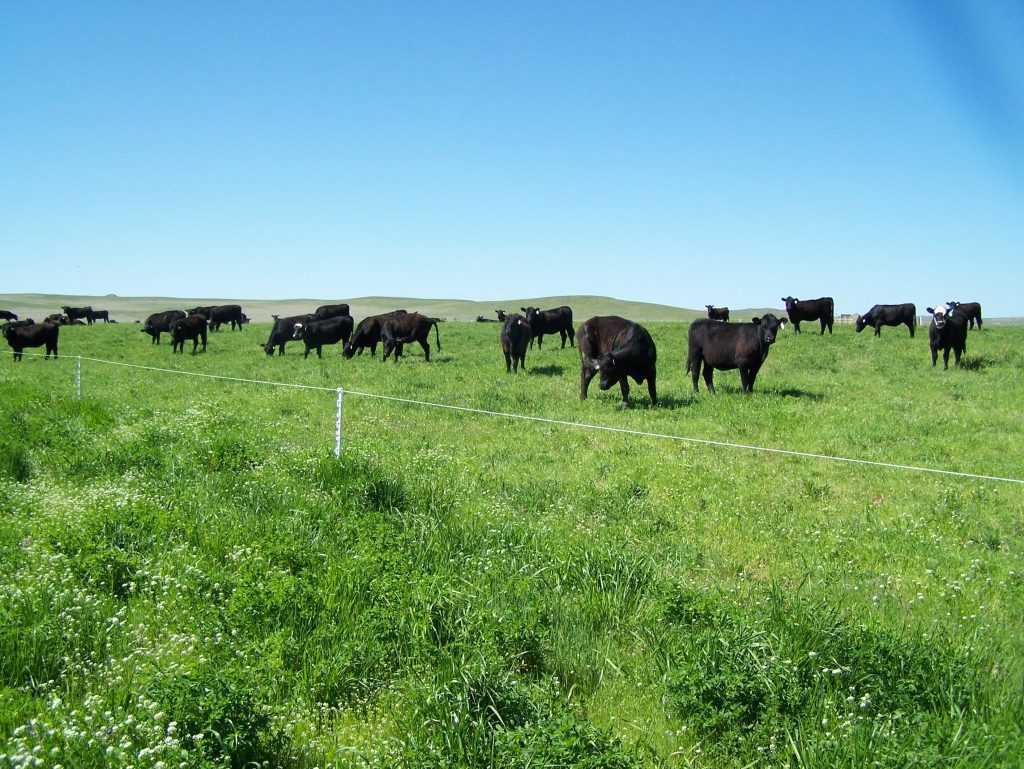Environmental Stewardship Recognized

The Wyoming Environmental Stewardship Program recognizes ranchers whose natural stewardship practices contribute to the environment and enhance productivity and profitability.
This year, S&W Livestock, LLC is honored as the 2024 Wyoming Stock Growers Association (WSGA) Environmental Stewardship Award winner.
WSGA, the Wyoming Department of Agriculture, the Wyoming Game and Fish Department and Audubon Rockies are proud sponsors of this prestigious award.
“Over the 27-year history of WSGAʼs Environmental Stewardship Program, the consistent message has been the passionate commitment to resource stewardship exemplified by the honorees. At the same time, as demonstrated by this year’s nominee, S&W Livestock, LLC, these successful ranches have each evolved in their own unique manner,” stated Jim Magagna, WSGA executive vice president.
From the beginning
University of Wyoming (UW) Professor of Plant Sciences and Director of the Sheridan Research and Extension Center Brian Mealor described S&W Livestock’s story as one of innovation, flexibility and foresight, not just with livestock or natural resources but also with succession planning and partnerships.
“Don Spellman came back to his family’s ranch near Spotted Horse in 1983 and participated part time in the operation while still working off site. Then, he bought the horse camp property before retiring in 1991 to ranch full time,” Mealor stated. “Don and his wife Kathy spent their winters in Arizona, but to maintain a presence at the ranch, they hired Lindsay (Wood) Taylor to provide ranch labor and assistance.”
Shortly after, Taylor took a leap of faith and resigned from her position with the UW Extension Office to expand her herd, which she began two years earlier, to take a full-time position at the ranch.
Taylor later married Dan Wood in 2011, and in 2013, the Spellmans and the Woods joined forces to establish S&W Livestock, LLC.
“The families have come together to form and grow the operation and are well-respected community members who are actively engaged in their community,” Mealor added. “The S&W Livestock story is very interesting because it is a family-type operation comprised of different families willing to develop a strong partnership to benefit their operations and the land they steward for themselves and the greater good. It is a story of innovation, experimentation, trust and good old-fashioned hard work.”
Stewardship practices
According to Mealor, S&W Livestock, LLC participates in educational events and programs focusing on soil health, rangeland monitoring, invasive weed management and alternative forage systems.
“They acquired grant funding to evaluate multiple methods for managing bulbous bluegrass and were early adopters battling the spread of ventenata in Campbell County,” Mealor described. “They have experimented with cover crop mixes for soil health and shoulder-season forages, evaluated deep-pot tree plantings to restore riparian areas and partnered with UW on a native plant initiative.”
S&W Livestock, LLC has had a long history of working with the Gillette Natural Resources Conservation Service (NRCS) on projects to improve their land and have invested in water development projects over the years, which has led to more than 33 miles of water pipelines connecting seven wells to 46 livestock watering tanks.
Mealor also mentioned, “Along with water developments, S&W Livestock, LLC has made significant enhancements to improve livestock distribution and flexibility, largely in the form of 36-plus miles of wildlife-friendly electric fencing which divides their grazing lands into more than 50 pastures.
NRCS District Conservationist Tim Kellogg has been working with the ranch since 2006 on numerous projects, including the local sage grouse project and extending existing pipelines to improve the overall range health of the ranch.
“We are currently working with them on an annual invasive grass control, cover crops and fence replacement program for improved big game movement,” Kellogg mentioned. “They now have over 52 permeant pastures they further divide with temporary electric fencing.”
He added, “With Lindsay’s background in animal science, they made several changes to their herd and how they handled their livestock. The biggest changes affecting the natural resources of the ranch were reducing the average size of their cattle, moving their calving dates to late spring and developing an intensive grazing system.”
S&W Livestock, LLC is committed to stewardship and sustainability through its work and partnership with many different conservation organizations.
Being early adopters of regenerative grazing approaches, they have always been ahead of the curve and continue demonstrating their management techniques can build soil, sequester carbon, reduce water runoff and create ecosystems more resilient to drought.
“S&W Livestock, LLC has shown a commitment to conservation in three primary ways – habitat management, animal welfare and husbandry and environmental sustainability,” stated Audubon Rockies Conservation Ranching Director Dusty Downey.
Melissa Anderson is the editor of the Wyoming Livestock Roundup. Send comments on this article to roundup@wylr.net.





